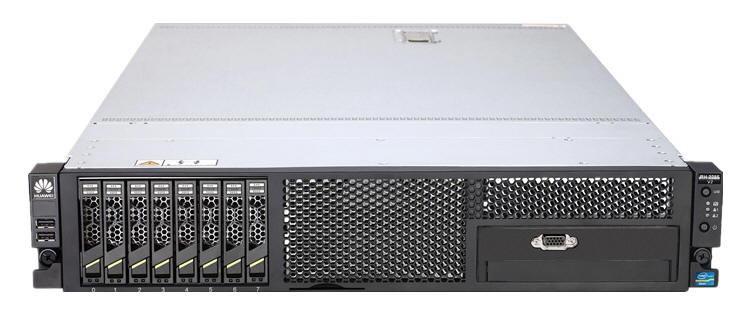Provides video conferencing device management and service control, supporting both Huawei and third-party devices.
The Service Management System 2.0 (SMC 2.0) offers simple interfaces for users to set up and control conferences, including conferences that require traversal between private and public networks. At the same time, the SMC gives system administrators sophisticated features for managing devices across large networks.
Fully leverage video conferencing resources with the SMC’s intuitive web interface and superior QoS technologies.

| Vendor | Product | Description | Huawei Advantages |
|---|---|---|---|
| HUAWEI | SMC2.0 | Huawei SMC2.0 controls the whole videoconferencing system and manages all resources, including conference scheduling, reservation and initiation, which perfectly accommodates customers' conference requirement-Enter the configuration interface to configure quantities of each item | |
| POLYCOM | RESOURCE MANAGER |
System Management, Conference Scheduling 1. Device management and conference control 2. MCU Resource pool management(DMA 7000 needed) 3. GK and SIP Server function(DMA 7000 needed) |
System Management, Conference Scheduling 1. Device management and conference control 2. MCU Resource pool management 3. GK and SIP Server function 4. Support SiteCall and one touch to join conference, ease of use 5. Can manage the Cisco C series and Polycom HDX series endpoint |
| Technical Specifications | |
|---|---|
| Protocol and standards compliance | |
| Communication Standards: | ITU-T H.323, and IETF SIP |
| Other Supported Standards: | H.225, H.245, Q.931, H.235, SDP, TLS/SRTP, H.239, BFCP, H.460, ICE, STUN, TURN, SNP, SIP TRUNK, TCP/IP, HTTP, HTTPS, SSH, SNMP, LDAP/H350, RTP, RTCP, and DDNS |
| Functions and features | |
| User Management |
Hierarchical and role-based management of users Support for user logins from web interfaces |
| Device Management |
Unified management for all devices including MCUs, telepresence, endpoints, recording servers, and GK/SIP server: Telepresence system architecture can be viewed in graphics-based topology displays Management for multi-vendor endpoints Auto detection, device status query, device configuration template, batch parameter configuration and modification, locked parameters, batch software version management and upgrade, device status query, alerts processing, and operation logs viewable on the web |
| Conference Scheduling |
Features include MCU virtual resource, SiteCall, ad hoc conference, conference activation, and recurring conference. Conferences can be scheduled from the web interface or Outlook. When scheduling conferences, users can view the free or busy status of each participant or each site. Conference notifications can be sent via emails. |
| Conference Cascading | Users can schedule and manage cascaded conferences automatically or manually. |
| Conference Control | Users can add or delete participants, mute speakers, mute microphones, broadcast sites, view sites, and set continuous presence mode. |
| Conference Quality Display |
End-to-end conference quality, such as packet loss, jitter, delay, and the number of consecutive lost packets is displayed on graphs in real time. The system supports threshold alarms and data export. |
| Billing, Reports, and CDRs |
Users can define conference billing codes. The system supports CDR text files, reporting of conference statistics and site usage, and MCU usage. |
| GK/SIP Server Functions | Functions include node management, blacklist/whitelist, call control, number change, bandwidth management, zone management, routing management, and SIP proxy. |
| System Backup | Support for 1+1 redundancy backup |
| Firewall Traversal |
H.460 18/19-compliant (H.323) Firewall ICE/STUN/TURN-compliant (SIP) Huawei patented SNP traversal-compliant Support for video firewall traversal of dual network interfaces |
| Third-party Integration and APIs |
Integration with Microsoft ActiveDirectory Integration with Microsoft Exchange Server Integration with Microsoft Lync2010TM/OCS2007R2 Third-party APIs |
| Multiple Languages |
English, French, Spanish, German, Italian, Russian, Polish, Japanese, Simplified and Traditional Chinese (Chinese and English online help) |
| SMC2.0 Server | |
| Operation environment | |
| Dimensions (H x W x D) |
87.3 mm x 447 mm x 760 mm supports 19-inch rack-mount chassis |
| Weight | 24.0 kg |
| Interfaces |
6 x GE Ports (RJ-45) with TCP/IP Offload Engine (TOE) support 1 x 10/100M network port for maintenance (RJ-45) 1 x DB9 console port 1 x DB15 VGA port |
| Power |
Input Voltage: 100V to 120V AC or 200V to 240V AC Two hot-pluggable 460W power supplies for 1+1 backup |
| Environmental Data |
Operating temperatures: 10℃ to 35℃ Storage temperatures: -40℃ to 65℃ Temperature fluctuation: < 20℃/h |
| Relative Humidity |
Operating humidity: 8% RH to 85% RH (non-condensing) Storage humidity: 5% RH to 95% RH (non-condensing) Humidity fluctuation: < 20% RH/h |
| Atmospheric Pressure | ≤ 3,000m (Operating temperature reduces by 1℃ for every 300m above 900m) |
| Operating System |
Microsoft Windows Server 2008 (R2) Standard Support for Chinese and English operating systems |
| Database | Microsoft SQL Server 2008 R2 |
| System Performance | |
| Registrations | 1,000 |
| Concurrent Calls | 1,000 |
| Manageable Devices | 10,000 |
| Traversal traffic (Mbit/s) | 60 |
| SMC2.0 Software Version | |
| Operating environment | |
| Operating System | Microsoft Windows Server 2008 (R2) Standard |
| Database | Microsoft SQL Server 2008 R2 |
| Server Configuration | 4-core CPU (basic frequency ≥ 2.2 GHz), 8G memory, 300G hardware, single/dual 1,000M network interface card, supports VMware deployment |
| System Performance | |
| Registrations | 100 |
| Concurrent calls | 100 |
| Manageable Devices | 100 |
| Traversal traffic (Mbit/s) | 60 |